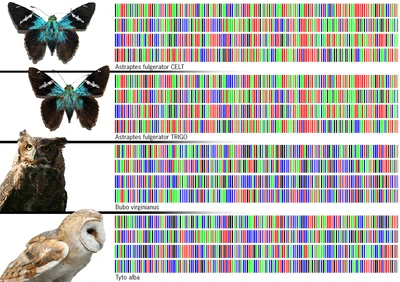
DNA Barcoding is a method used by taxonomists that uses a small marker or peice of a marker to identify the species based soley off of its DNA sequence. Examples of markers used for the are CO1 (animals) and MatK (plants).
The idea is that eventually morphology will not be used as a criteria for identifying species as it is a sometimes subjective measure. In this way DNA can be used at the sole basis for species concepts.
Controversy
The controversy surrounding the use of DNA barcoding in taxonomy is that it does not work reliably for all organisms and does not take into account important and clear morphological differences that have been used to separate species. Taxonomists and cladists are up in arms about this new technique as it arguably could get rid of a major component of their job.
Bioinformaticians are generally in favor of this new technique because it could automate and computerize all aspects of taxonomy and create an even more robust GenBank sort of database.
One question that has arisen is how many markers does it take to correctly barcode an organism? This review gives a comprohensive resonse.
Sources:
Seberg O, Petersen G (2009) How Many Loci Does it Take to DNA Barcode a Crocus? PLoS ONE 4(2): e4598. doi:10.1371/journal.pone.0004598
http://en.wikipedia.org/wiki/DNA_barcoding#cite_note-seberg2009-3